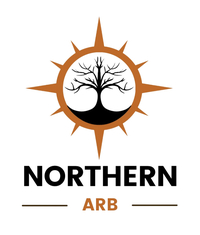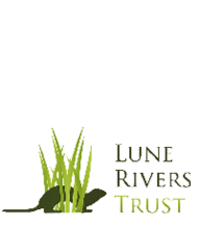Many thanks to
Northern Arb Ltd for facilitating this camera's location. The river originates as a stream at Newbiggin in the parish of Ravenstonedale, Cumbria, near St. Helen's Well, which sits at an elevation of 238 meters (781 ft) above sea level, along with several nearby springs. Within the first two miles of its course, the river is joined by four streams, two of which are of similar length to itself, while the other two are considerably longer. These tributaries include the Bessy Beck (short), the 4.9-kilometer (three-mile) long Dry Beck located 0.32 miles (0.51 km) from St. Helen's Well, the Sandwath Beck (short) at 0.37 miles (0.60 km), and the Weasdale Beck (5.58 km = 3½ miles) situated 1.6 miles from the well. The Weasdale Beck holds the distinction of being the uppermost headwater of the River Lune recorded in the Environment Agency's Catchment Data Explore. Continuing on its course, the river passes the remnants of a Roman fort near Low Borrowbridge, situated at the base of Borrowdale, and flows through south Cumbria until it reaches the Irish Sea at Plover Scar near Lancaster, covering a total distance of approximately 53 miles (85 km).The Lune Valley can be divided into three distinct sections. The northern part, extending from its source to Tebay, is referred to as Lunesdale. Below this section lies the striking Lune Gorge, through which both the M6 motorway and the West Coast Main Railway Line traverse. Beyond the gorge, the valley widens, forming Lonsdale.Noteworthy bridges that span the River Lune include the Devil's Bridge near Kirkby Lonsdale and the Lune Millennium Bridge in Lancaster. About 5 miles (8 km) upstream from Lancaster, at Caton, a cluster of three bridges can be found at the Crook o' Lune. This cluster consists of a stone road bridge and two disused iron rail bridges that are now utilized as footpaths or cycle paths. The river exhibits a 180-degree right-hand bend at this point, followed by a 90-degree left-hand bend, resembling the shape of a shepherd's crook. This picturesque location, famously captured in a painting by J. M. W. Turner, is considered a natural beauty spot. The Lune is crossed by the M6 motorway near Tebay and Halton-on-Lune, and in 2015, it was joined by the Heysham to M6 Link Road. The Ingleton branch line, a railway that operated between 1861 and 1967, followed the course of the River Lune between Tebay and Kirkby Lonsdale, crossing the river twice on viaducts that still stand.
Situated to the north, strategically positioned by the River Lune and in close proximity to the M6 motorway, are the earthwork remains of a motte and bailey castle known as Castle Howe. During the Roman occupation, a Roman road ran alongside the River Lune, connecting a fort at Low Borrowbridge near Tebay with another fort at Over Burrow south of Kirkby Lonsdale. Tebay was once home to the prophetess Mary Baynes, popularly known as the 'Witch of Tebay,' who passed away in 1811. Tebay railway station, part of the Lancaster and Carlisle Railway built to connect the cities of Lancaster and Carlisle between 1844 and 1846, played a significant role. The station was incorporated into the London and North Western Railway in 1879. Tebay became an important junction when, in 1861, the Stainmore Railway, which connected Tebay-Kirkby Stephen-Barnard Castle, and later became part of the North Eastern Railway, brought traffic from the east. However, the line was closed in 1962. The A685 road follows much of the trackbed east from Tebay towards Kirkby Stephen. The Ingleton Branch Line of the Lancaster and Carlisle Railway, connecting to Settle and Leeds via the Midland Railway, intersected the main line at the southern end of the Lune Gorge. This line, established in the 1850s, was last used for passenger service during the winter of 1962-63 as a relief to the main line. Junction 38 of the M6 motorway lies just west of the village of Tebay, south of the exposed Shap Summit. Similar to its predecessor, the main railway line, the motorway utilizes the upper reaches of the River Lune to traverse the fells. Tebay Services, an independently run motorway service station, has gained recognition for its food and stands as one of the very few establishments of its kind. The Farson crew particularly enjoys breakfast at Tebay Services.





